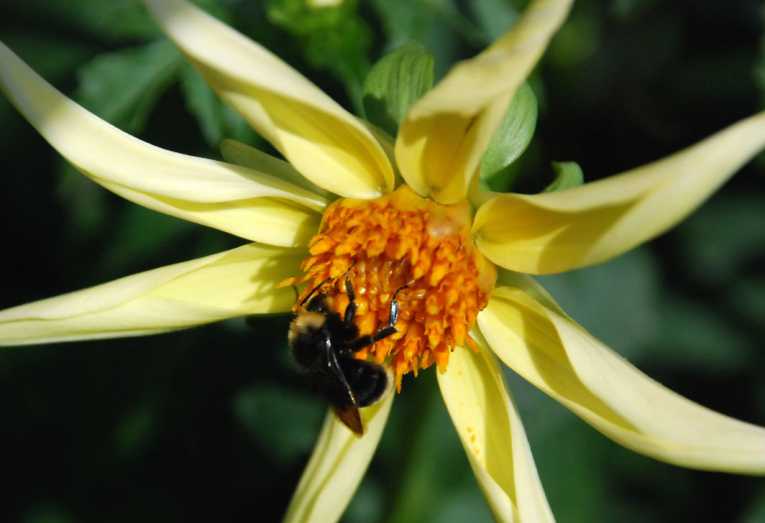The decline in pollinator populations during the past two decades has caused major concern in the agricultural and scientific community. Pollinators of all types are vital to agriculture and are responsible for the production of crops worth US$225 billion worldwide. In the United States alone honey bees account for an added market crop exceeding US$15 million.
The recent dramatic losses of thousands of honey bee colonies has highlighted the ever-increasing risk of a future crisis in global food supply when we are solely dependent on honey bees for pollination.
Honey bees are very social insects living in compact, highly organised and productive colonies of up to 60,000 members, but this makes them vulnerable to more than 18 identified viruses.
Apart from honey bees there are about 4000 other species of wild bees and wasps native to North America. These also make an important contribution to pollination, but researchers in a multi-institutional study in the United States have discovered that these native pollinators can be infected by the same viral diseases as honey bees.
Diana Cox-Foster, professor of entomology at Pennsylvania State University and co-author of the report, gives various reasons for the decline of pollinator populations, including ribonucleic acid (RNA) viruses, which are emerging as a serious threat.
She explains how the RNA viruses are suspected as major contributors to Colony Collapse Disorder (CCD), where complete honeybee colonies die, with few or no bees left in the hives.
Recent detection of these viral species in bumble bees and other native pollinators suggests that the environmental spread of these viruses could be wider, with potentially a much more significant impact.
The researchers chose three US states for their study: Pennsylvania, New York and Illinois. They looked at the viral distributions in pollen loads collected from flowering plants by honey bees and other pollinators.
For the first time RNA viruses such as deformed wing virus, sacbrood virus and black queen cell virus were detected in pollen pellets that had been collected directly from forager bees.
Some virus-infected pollen pellets that were detected came from uninfected forager bees, which suggested to the researchers that it was probably the pollen itself that harboured the viruses. It was also discovered that when virus-contaminated foods were given to previously virus-free colonies, the viruses in the pollen and honey stored in the hive became infective, with the queen becoming infected and laying infected eggs.
These viruses were detected in eleven other species ranging from many solitary bees to bumble bees and wasps. In containment greenhouse experiments it was discovered that a viruses could move from infected honey bees to bumble bees and from infected bumble bees to honey bees within a week, demonstrating that a virus could be transmitted from one species to another.
The report provides new insights into viral infections in native pollinators, suggesting that viral diseases may be key factors affecting pollinator populations. The findings also raise biosecurity issues because pollen is currently being imported into many countries to feed honey bees used in agricultural pollination.










